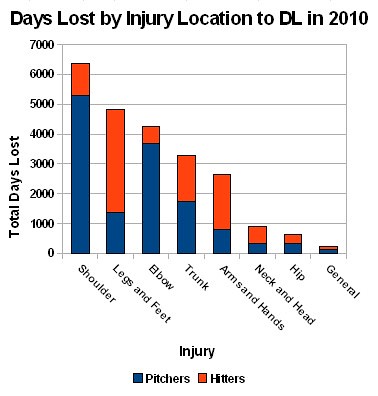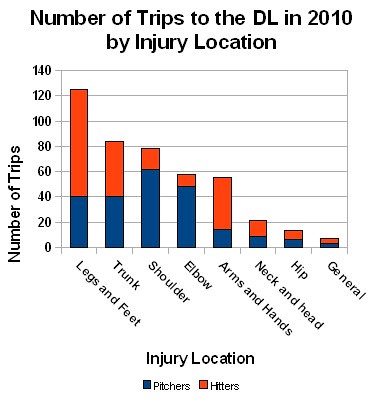Today I flew into Phoenix, Arizona to spend four days watching Arizona Fall League games. It’s my first experience with the league, filled with offensive prospects, future replacement-level relievers, and stadiums where you could hear a pin drop. The intimacy and inexpensiveness make it a must-see for prospect fans. Today’s game between the Mesa Solar Sox and the Phoenix Desert Dogs did not meet that standard. It wasn’t the best baseball, but it was prospect laden nonetheless. As I’ll do this week, I will run through some notes I made during batting practice, about the pitchers, and then about the position players during the game. Next week, I’ll write more specific reports on these players as I see them more than once.
Batting Practice Thoughts
The best batting practice award goes to Kyle Skipworth, the former sixth-overall pick by the Florida Marlins. Built like a truck (6-foot-4, 205 lbs), Skipworth showed easy plus power, with a slight uppercut swing. It’s not without its holes, and his upright stance probably exposes the low-and-away section of the zone, but when he makes contact the ball goes far. He was the only hitter on both teams to hit an opposite field home run during BP.
The honorable mentions in batting practice are Andrew Lambo and Austin Romine. While they stand at different sides of the plate, both came off as dead pull hitters in BP, but with power. Romine has better bat speed, Lambo has a prettier and smoother swing, both did a nice job.
I wasn’t as impressed with Michael Taylor, the member of the Roy Halladay trade that was subsequently traded to the Oakland A’s. Listed at 6-foot-6, 260 pounds, Taylor’s path to big-league success is with a power bat. But this season, he hit just six home runs. His batting practice revealed why: despite great strength in his legs, Taylor doesn’t use them at all. He barely has a weight transfer, and only uses his upper body to produce power. That’s not going to work.
The other disappointing performance came from Brandon Laird, the Yankees prospect moving from third base to left field in the AFL as the Yankees try to add versatility to his resume. Laird had a good season at the plate, and he has aggressive plus bat speed, but he’s going to have problems with big-league pitching. His swing is the funky kind that big-league pitchers can often take advantage of, specifically a timing mechanism with his front leg. He struggled squaring up balls throughout each round of batting practice.
Quick hits: Brett Jackson and Tony Sanchez hit line drives all over the place, but their level swings should keep power expectations low … Matt Rizzotti has a build unlike any offensive prospect I’ve ever seen, and his swing isn’t good enough to make up for the bad body … Kirk Nieuwenhuis has a great right field body, but his swing has some holes that are easily exposed … Jerry Sands was going opposite field throughout batting practice, and hit a lot of balls with topspin. I believe the .300 batting average more than the 35 home runs. Teammate Trayvon Robinson didn’t have very good bat speed, but showed more power than his ISO from this year would have you believe.
Pitching Thoughts
This will be short. It wasn’t good. Neither starter, Travis Banwart or Jake Muyco, profiles as a Major League pitcher. Both were throwing in the high 80s, and neither had a breaking ball that was even fringe-average. Muyco touched 90, which I didn’t see Banwart do, but they are organizational players. Cory Gearrin was the first out of the pen for Phoenix, and he’s funky enough to stumble into Major League success. A true sidearmer, Gearrin has a plus frisbee slider that should be enough to get big league right-handed hitters out. But he needs better command with his 85-88 mph fastball than he showed today.
Both Ryan Brasier (Angels) and B.J. Rosenberg (Phillies) pitched in the low 90s, maybe touching 94 mph. Rosenberg was probably a little more impressive, with a big over-the-top delivery and a slider that he spots low and away to righties. He’s been injured for much of his career, and is still a long shot, but even that was noteworthy today.
Position Player Game Thoughts
If anything stands out from today, it’s that Austin Romine is not the polished defender that Yankees fans hope. Romine is actually a bit of a mess defensively, allowing three balls to the backstop that shouldn’t have been throughout the day. On one occasion, the ball went back because Romine was more worried about showing off his plus arm to the scouts, with the runner on first stealing second. Maybe it was Romine’s incompetence, but I liked Tony Sanchez‘ defense on the other side. He’s slighter and more athletic than I was led to believe, and he stopped a couple sliders in the dirt.
Tyler Pastornicky showed good actions and enough arm at shortstop during infield practice before the game, but had a rough day at shortstop. He probably is indeed a second baseman. Jerry Sands is a tough read defensively, but he looks adept at scooping balls out of the dirt, just maybe not at going into the hole well. He could be a good first baseman, but I struggle to believe he could work in the outfield.
Offensively, the ball jumped off the bats of Austin Romine, Brett Jackson and Trayvon Robinson especially, though the latter was the only one who actually homered. Romine’s power grades out the best, as he hit a ball that he didn’t square up perfectly off the top of the wall in right center, about 400 feet in all. I also saw Josh Vitters walk today. A unique day, indeed.


